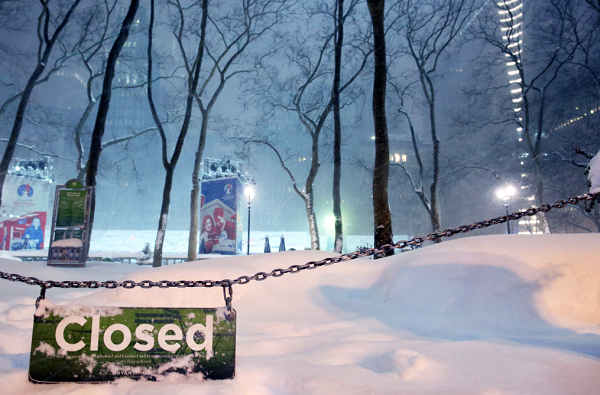Snowmageddon 2017? Farmer's Almanac Teases 'Teeth-Biting' Cold Weather Next Winter

As if the 2016 summer heat wave wasn’t unbearable enough, there may be a potential snowmageddon hitting the East Coast come winter 2017.
According to the 2017 Farmer’s Almanac, the highly acclaimed and historic weather prediction resource, the U.S. — specifically the Northern Plains, Great Lakes, Midwest, Ohio Valley, Middle Atlantic, Northeast and New England — may be facing a “teeth-chattering winter.” However, periodic shots of bitter cold temperatures are predicted to reach as far south as Florida and the Gulf Coast.
As for the West Coast, the Almanac says the usual “milder-than-normal temperatures will prevail.”
The annual edition, which was released Monday, notes that cold conditions aren’t expected to kick in until mid-November in the Northeast, Great Lakes and Midwest. The frigidly cold conditions are slated to arrive until after winter officially sets in Dec. 21, and residents should expect plenty of snow to arrive with the bone-chilling climates.
In fact, an active storm track is predicted to deliver “above-normal precipitation” to the Southeast, Northeast and New England for the majority of the winter. The Almanac says that February may see the most snowfall of all. Feb. 16 – 19 have been specifically red flagged for unusually high amounts of snowfall in the North East as an “intense storm” is expected to develop near the Virginia Capes and spread, particularly through parts of the Tennessee Valley through western North Carolina, the Virginias, Maryland, Delaware and northeast areas into southern New England. Snowfall could reach one to two feet in certain areas.
The active storm will also affect the West Coast, which may see more rain than usual during the winter months.
The Old Farmer's Almanac and its competitor Farmer's Almanac have become a North American staple for weather tracking since the early 1800’s. Over 3 million books are printed and sold each year despite the level of accuracy — or lack thereof — featured in weather reports.
CNN senior meteorologist and executive producer Dave Hennen warned the books' predictions shouldn’t be taken in extremity, especially since both books claim to be only 80 percent accurate on all forecasting.
“It’s difficult enough to do a five-day forecast,” he said. “We’re really good at the day of and the next day, [and] we’re better at temperature a ways out than precipitation. But to forecast that far in advance…even the science behind our long-rang forecasting is sometimes not that solid.”
It is still unclear exactly how the Old Farmer's Almanac derive their weather predictions. According to the website, the book's founder Robert B. Thomas came up with the weather predicting formula, which is been held top secret since its creation in 1792. However, the formula is based on three science disciplines: solar science, the study of sunspots and other solar activity; climatology, the study of prevailing weather patterns; and meteorology, the study of the atmosphere.
© Copyright IBTimes 2024. All rights reserved.






















